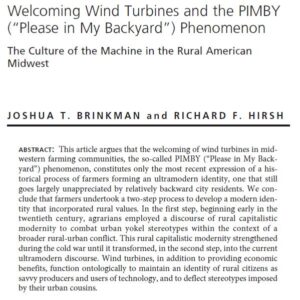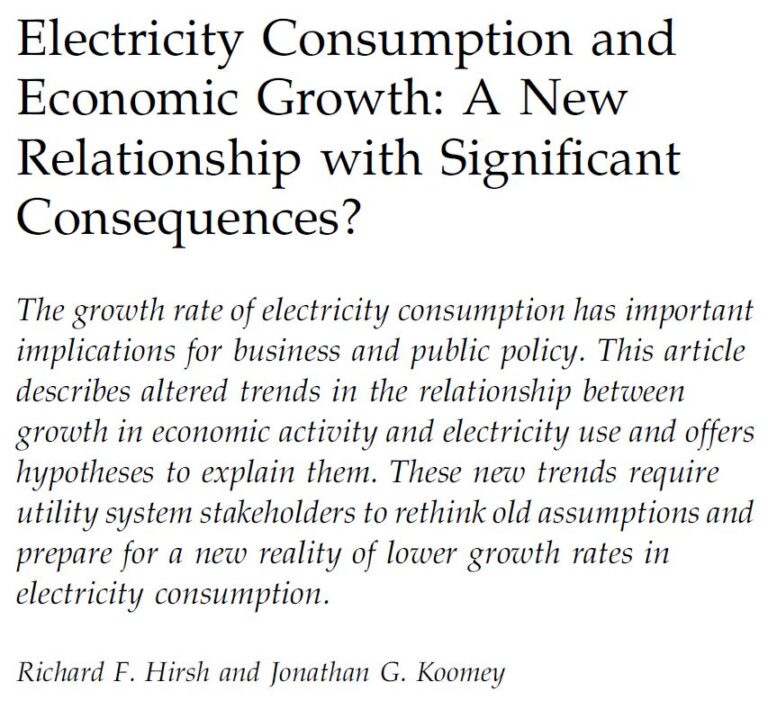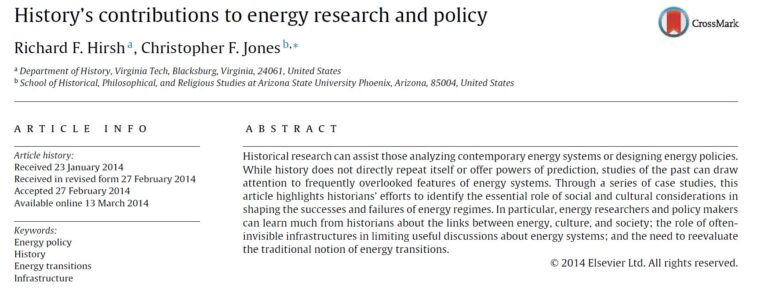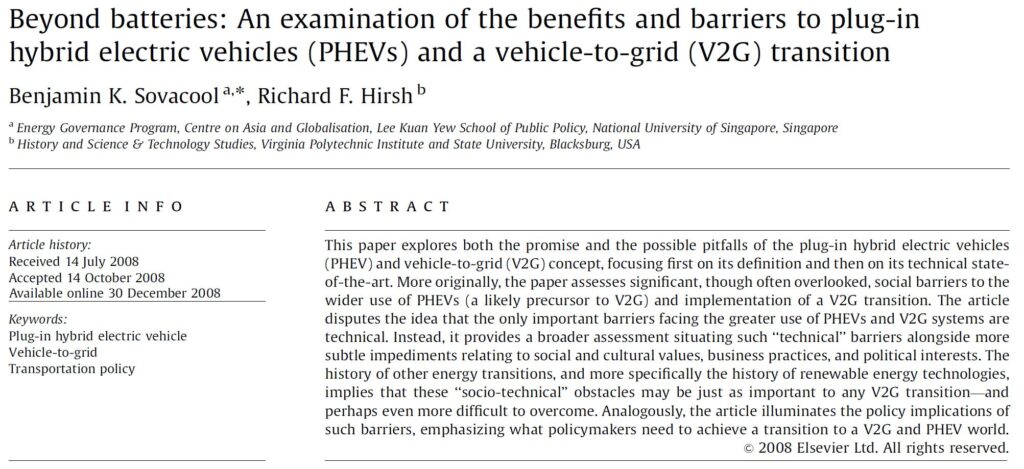Some other significant publications by Richard Hirsh (and collaborators)
This article is a preview of the book, Powering American Farms: The Overlooked Origins of Rural Electrification.

“Shedding New Light on Rural Electrification: The Neglected Story of Successful Efforts to Energize Farms in the 1920s and early 1930s,” Agricultural History 92, no. 3 (Summer 2018): 296-327. http://www.jstor.org/stable/10.3098/ah.2018.092.3.296
Why do some people love wind turbines on their land? For midwestern farmers (among others), the turbines represent their cultural values.

“Welcoming the PIMBY (“Please in my backyard”) Phenomenon: The Acceptance of Wind Turbines and the Culture of the Machine in the Rural Midwest,” (with J.T. Brinkman), Technology and Culture 58, no. 2 (2017): 335-67, https://muse.jhu.edu/article/662980.
The growth rate of electricity consumption has slowed dramatically, but economic growth has continued, thus challenging long-held assumptions about the relationship between the two factors. How and why?

“Electricity Consumption and Economic Growth: A New Relationship with Significant Consequences?” (with Jonathan G. Koomey), The Electricity Journal 28, no. 9 (Nov. 2015): 72-84. https://doi.org/10.1016/j.tej.2015.10.002
A historical understanding of energy transitions can help in developing effective policy.

“History’s Contributions to Energy Research and Policy,” (with Christopher F. Jones), Energy Research & Social Science 1 (Mar. 2014): 106-11. https://doi.org/10.1016/j.erss.2014.02.010
Many people dislike wind turbines located near them, but not all the reasons for their displeasure are vocalized. This article explains some of the unarticulated reasons that deal with the urban-rural divide in modern society.

“Wind Turbines and Invisible Technology: Unarticulated Reasons for Local Opposition to Wind Energy,” (with B.K. Sovacool), Technology and Culture 54 (Oct. 2013): 705-34. doi:10.1353/tech.2013.0131
Personal reflections (and recommendations) on how to use historical understanding to influence the policy world.

“Historians of Technology in the Real World: Reflections on the Pursuit of Policy-Oriented History,” Technology and Culture 52 (Jan. 2011): 6-20. doi:10.1353/tech.2011.0039
This highly cited paper explains that the acceptance of electric vehicles requires more than just good hardware (such as long-lasting batteries).

“Beyond Batteries: An Examination of the Benefits and Barriers to Plug-in Hybrid Electric Vehicles (PHEVs) and a Vehicle-to-Grid (V2G) Transition,” (with B.K. Sovacool), Energy Policy 37 (2009): 1095-1103. https://papers.ssrn.com/sol3/papers.cfm?abstract_id=3445373
More of Richard Hirsh’s publications are listed in his abridged curriculum vitae.